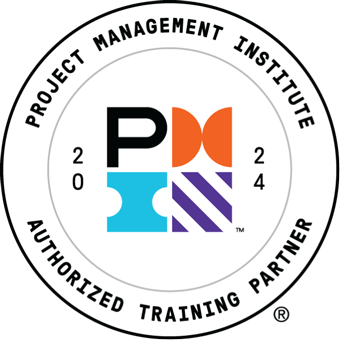Features
Premium video tutorials
Award-winning instructors
Personalized learning
Get certified
Learn at your own pace
Mobile (learn on-the-go)
Unlimited tests and quizzes
Regularly updated content
Overview
Whether it’s your first project or your fiftieth, adhering to a project management framework builds confidence and eliminates guesswork, bringing you closer to project success. In this Project Management Framework training course, you’ll learn the foundations and structure of traditional and Agile Scrum frameworks, helping you standardize your processes and account for factors that could impact your project’s execution and delivery.
By the end of this Project Management Framework course, you’ll be able to:
- Understand the benefits of working within a project management framework and the governance of project management business practices.
- Lay the groundwork for a successful project.
- Plan, organize and structure your projects according to today’s best practices.
- Avoid common errors by approaching your projects through the lens of project risk management.
- Identify goals, objectives, boundaries, and constraints before launching your project.
- Understand traditional and Agile Scrum frameworks with 30 engaging lessons that include real-world examples and actionable exercises.
- Earn 15 PDUs or contact hours toward your Project Management education for certification with PMI.
This course is based on The Project Management Institute, A Guide to the Project Management Body of Knowledge (PMBOK® Guide) - Seventh Edition, Project Management Institute, Inc., 2021.
If your goal is to become a Certified Project Management Professional, this course is an ideal starting point. Once you’ve mastered the tools and techniques in this Project Framework course, we recommend taking our Project Teams and Stakeholders, Project Planning, and Project Performance and Delivery.
Once enrolled, our friendly support team and tutors are here to help with any course-related inquiries.

- 720p
- 540p
- 360p
- 0.50x
- 0.75x
- 1.00x
- 1.25x
- 1.50x
- 1.75x
- 2.00x
Summary
Syllabus
Project Management Foundation Free Lesson
1
Circles of Project Management
Circles of project management are a framework for considering different project management aspects. Based upon project and organizational considerations, some aspects may be emphasized and others de-emphasized.
2
Methods and Models
Project managers use models and methods to organize the management approach and execute the project management activities.
3
Project Tailoring
Project tailoring is the modification of a standard project management methodology to reduce risk by accommodating the unique business and project characteristics of the project.
4
Progressive Elaboration
Progressive elaboration is the principle of steadily adding detail to the project plan as more information becomes available.
5
Projects, Programs, Portfolios
Portfolios are often comprised of programs that are often comprised of projects; all of which either create or support operations.
Project Management Methodology Free Lesson
1
Project Management Methodology
2
Methodology Comparisons
The three approaches presented are three very different ways of managing a project. Understanding the differences will enable a business to select the best approach for their projects.
3
Sprint-Scrum Process
The Agile/Scrum methodology is a structured project management methodology. It follows a prescribed process that includes Sprints and Scrums.
4
Project Phases
Projects are often organized into phases. Phases provide structure and logic to the project and aid the project team and management to track progress.
5
Project Management Domains
Understanding the domains found in the PMBOK® Guide will prepare an individual to manage a project. These domains are universally applicable across industries and project types and are essential aspects of project management throughout the project lifecycle.
Uncertainty and Risk
1
Positive and Negative Risk
Understand the difference between positive and negative risk. Learn the major steps of project risk management.
2
Risk Register
The Risk Register is a table that tracks the project risk management activities.
3
Risk Identification
Risk Identification is the practice of identifying positive and negative conditions that may occur within the project and impact project objectives.
4
Risk Matrix
All project risks are not equal in their effect on a project. Project risks that have been identified are prioritized using qualitative techniques such as the Risk Matrix.
5
Negative Risk Response
Negative Risk Response is determining what actions the project will take to address risk threats.
6
Positive Risk Response
Positive Risk Response is determining what actions the project will take to address risk opportunities.
7
Contingency and Triggers
Contingencies are potential risk response actions that will only be implemented if some triggering event or condition has shown that the risk probability has gone from unlikely to likely.
Business Value
1
Project Benefits
2
Creating a Business Case
The business case provides the business rationale, normally in financial terms, of whether the project should be done.
3
Project Charter
The Project Charter is the document that approves the initiation of the project and identifies goals, objectives, boundaries, and constraints.
4
Requirements Planning
Project requirements are often vague, incomplete, or contradictory at the time of project initiation. Normally, additional effort is required to collect and verify the true project requirements.
5
In-Frame/Out-of-Frame
In-Frame/Out-of-Frame is a technique for clarifying project boundaries by listing both the activities and deliverables that are in scope for the project and listing the activities that are not required as part of the project.
6
Primary Constraint
The approach taken when planning a project should be based upon the primary project constraint. Attributes of that constraint are planned first and then other aspects of the project are planned to support the primary constraint.
7
Project Selection and Approval
The organization needs to establish a management discipline for selecting and approving projects.
Project Governance
1
Project Governance
2
Compliance Categories
3
Governance Impact
4
PMBOK® Guide
The PMBOK® Guide is the reference document upon which much of the PMP® exam is based. The PMBOK® Guide contains a description of project management domains, models, methods, tools, checklists, and templates.
5
Project Management Standard
A portion of the PMBOK® Guide is a standard for project management. That portion is Part 1, The Standard for Project Management of a Project.
6
PMIS and Project Management Software
The Project Management Information System (PMIS) is the method that the project manager and core team use to share and disseminate project information. It often is based upon the use of a project management software application.





